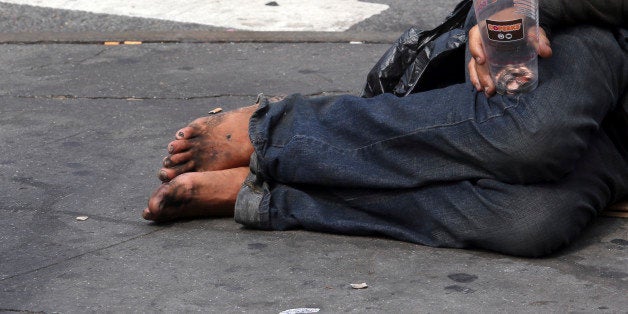
Lately, the issue of inequality is on everyone's lips. U.S. President Barack Obama stated that "growing inequality...is the defining challenge of our time." Pope Francis refers to inequality as "the root of social evil." I even heard hedge-fund manager Paul Tudor Jones II acknowledge that "higher profit margins do not increase societal wealth. What they actually do is exacerbate income inequality, and that's not a good thing." Hearing this is music to my ears. Every day, like many others, I see how inequality leaves damaging impressions on people's lives, even more so when it affects children. I saw inequality in Mozambique where I worked as a doctor. I see it today in New York as I walk to work. It's everywhere.
The need to address inequalities is an issue for all countries across the world. And the inclusion of a headline goal to reduce inequality within and among countries in the new global-development agenda is a clear sign that governments are taking this problem seriously. Now is time to capitalize on this historic opportunity to reduce the gaps between the richest and poorest and commit to giving everyone, especially the most disadvantaged children, the care, support and information they need to create a sustainable future for themselves.
Geographical location, gender, ethnicity, race, age, disability status and family income can all create a script for a child's future. Looking at these different elements of inequality -- who it affects, and how -- is a key part of the process we need to go through if we are going to achieve the goal. We need data. With this, we can begin to rewrite the script.
As well as smart data, to break vicious cycles of poverty, exclusion and deprivation -- which often span generation after generation -- we must invest wisely. We must make absolutely sure that the investment choices made by governments give the most disadvantaged children the chance to go to school and learn; the chance to access healthcare; the nutritious food they need to survive and grow; and the chance of a safe childhood.
Achieving this goal means that we have to start by reaching those children, young people and adults who are currently left behind the furthest. We start with them. Investing in the most disadvantaged children is not only the right thing to do, it is also one of the most powerful tools we have to break cycles of poverty and to lead to economic gains for society as a whole. For every one dollar spent on enrolling preschool children into school, we have a return of 33 dollars. It's not just education. When children eat the food they need to develop, they are more likely to earn more money when they reach adulthood, and thus alleviate levels of poverty.
When we don't invest in the most vulnerable, there are huge costs. Research suggest that violence against children globally costs society $7 trillion over the course of a lifetime.
But to reduce inequality, we need to treat the people most affected like equals and find out what they need. People who are marginalized, disadvantaged and discriminated against know what they need better than anyone else.
I remember hearing about an HIV-positive orphaned child not being able to get antiretroviral treatment because of a policy that required parents to be present, but being an orphan this was impossible. I also remember learning about a relocation project that moved families living in slums into secure housing. On the surface it seemed sensible but when I found out that the residents were moved so far away from their schools and jobs they had to completely start their lives over again, it didn't seem so smart.
We also need to tackle an insidious byproduct of inequality -- discrimination -- which can be so subtle it's almost invisible. Discrimination happens in every corner of the earth. For children, it saps their confidence and stops them from accessing the same opportunities as their peers. It holds sway over the entire course of a child's life. We have to speak out on discrimination, and we have to empower those affected by it to speak out, as well.
Inequality is not a problem for the people whose lives are directly affected -- it harms us all. Inequalities today lead to greater gaps and larger problems tomorrow, which will be much harder and more costly to fix.
Setting a goal to reduce inequality is a great step in the right direction. Now we need to turn this commitment into action to rewrite the script for the millions of children facing inequality. It's time to prioritize the most vulnerable, the most deprived, and the most left behind. For everyone's benefit.
This post is part of a series produced by The Huffington Post, "What's Working: Sustainable Development Goals," in conjunction with the United Nations' Sustainable Development Goals (SDGs). The proposed set of milestones will be the subject of discussion at the UN General Assembly meeting on Sept. 25-27, 2015 in New York. The goals, which will replace the UN's Millennium Development Goals (2000-2015), cover 17 key areas of development -- including poverty, hunger, health, education, and gender equality, among many others. As part of The Huffington Post's commitment to solutions-oriented journalism, this What's Working SDG blog series will focus on one goal every weekday in September. This post addresses Goal 10.